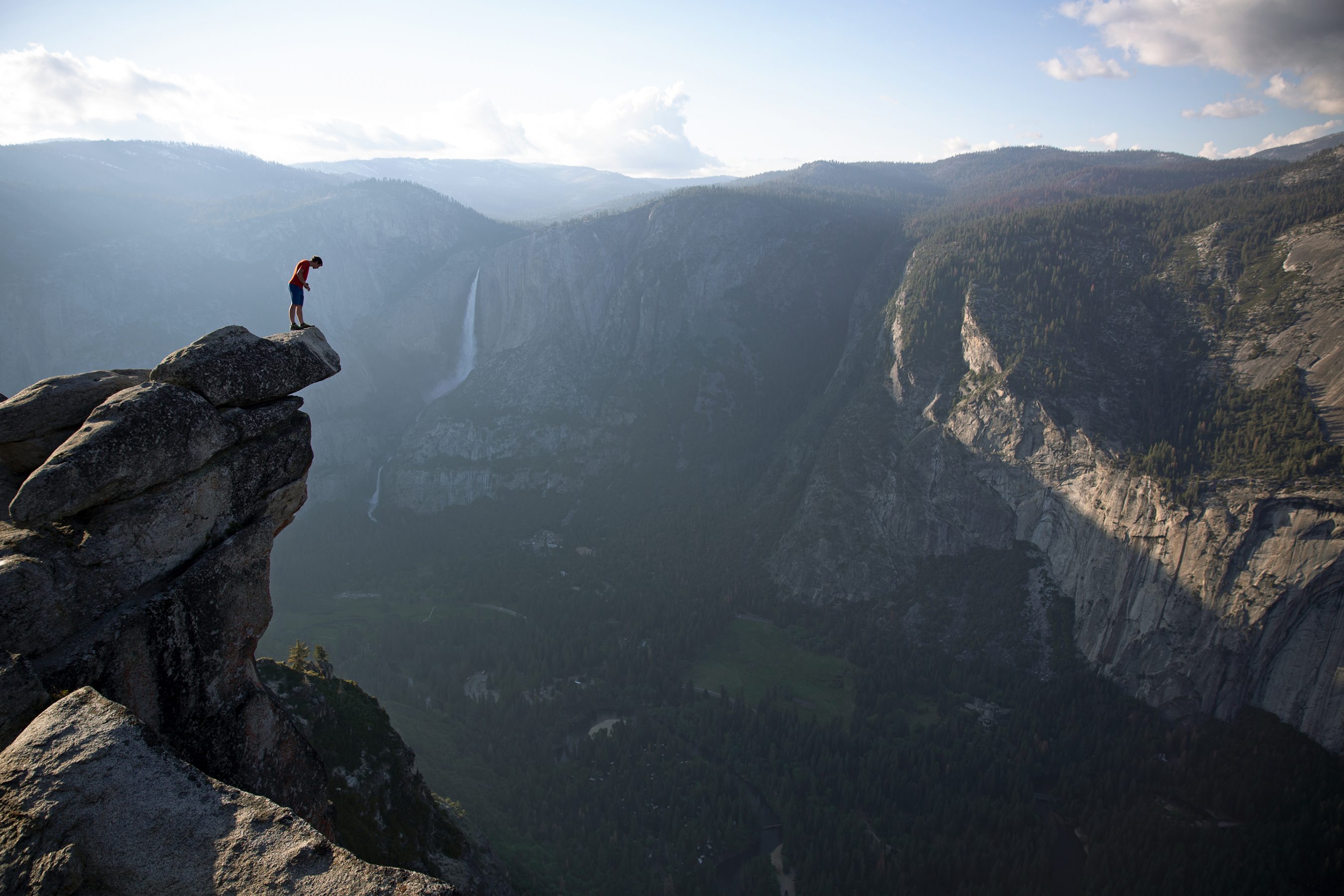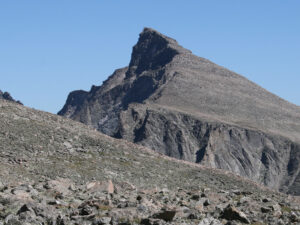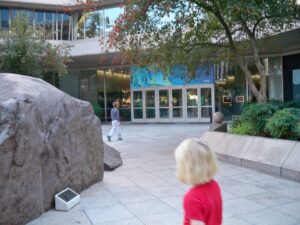In the opening shot of Free Solo, we hear Alex Honnold before we see him. As the camera ominously pans over the top of El Capitan, the 3,000 foot rock face in Yosemite, the sounds of Honnold’s steady breath and his hands moving against the rock are barely distinguishable. The expanse of trees below comes into view, and Honnold appears, clinging to the side of the rock in a landscape so vast and magnificent that it is shocking to see human life dropped into the middle of it.
The juxtaposition of grand nature and human mortality is central to Free Solo, the National Geographic documentary directed by Chai Vasarhelyi and Jimmy Chin that follows 33-year-old Honnold’s free solo attempt of El Cap, the first successful one of its kind. In the dangerous world of free soloing, climbers forgo their ropes and protective equipment for a challenge that requires perfection—one wrong move results in death. The issues the documentary addresses ultimately transcend the climb itself. Free Solo uses Honnold’s athletic feat as a vessel to tackle themes of coping with fear and mortality, understanding our closest relationships, and relentlessly pursuing our passions.
“It’s about having a life with intention, and that was always a universal thing,” Vasarhelyi said in an interview with the Voice.
Wide-eyed and youthful, Honnold is brutally honest from the first frame onward. While he clings to the edge of the rock face, methodically clawing up its side, he explains his perspective on fear: “When people talk about trying to suppress your fear, I look at it a different way. I try to expand my comfort zone by practicing the moves over and over again. I work through the fear until it’s just not scary anymore.”
Because of the dangerous nature of documenting a free solo attempt, the filmmaking process was meticulous and intentional when it came to both the ethics and logistics of the shoot. When asked about the most difficult issue the crew faced, Vasarhelyi noted the decision to even make the film in the first place. “Jimmy decided we had to take a step back because of the danger involved and the questions around if you introduce a camera. Is he more likely to fall because of us than when he’s alone? And is that ok? And what can we do to mitigate those risks, and how can we live with those risks?” she said.
The decision weighed heavy on the whole film crew, who had to grapple with the significant risks involved. What would happen if someone dropped a camera lens, and it distracted Honnold? Where could they safely position cameras along the route? Chin assembled a crew of filmmakers who were also all professional climbers, as they had to dangle alongside Honnold during the climb to get the right shots. “We also spent two years filming, practicing on it, so we had a very good sense of the very specific sections that were important to the narrative. We could dissect that up and be very surgical about how we shot that,” Chin said.
Honnold’s athletic feats are superhuman, fundamentally unrelatable to the majority of the audience. Epic aerial shots of El Cap and the surrounding areas in Yosemite loom large throughout the documentary, inducing awe and sweaty palms at every turn. And yet, Honnold is humanized through shots of him gleefully eating vegetables off of a spatula or stretching back into child’s pose on the floor of his van, which doubles as his home.
“There is this anecdote about Alex as a child, where it was scarier for him to speak to another person and ask him to be his partner than go climbing by himself, because he had no partner to belay him. I think most people have experienced a fear that is like that,” Vasarhelyi said.
Free Solo is strongest when it depicts Honnold’s psychology and personal relationships. In one scene, Honnold takes an MRI which reveals that his amygdala, the part of the brain that triggers fear, fails to activate in the way most do. Later, he takes a psychological evaluation in the lab, reading each question out loud as he answers. “Emotionally stable? Agree. Ingenious, a deep thinker…disagree,” he chuckles. “Is depressed … hm,” Honnold pauses to think, and the camera cuts away. In scenes like these, the film strays away from giving the audience a clear answer to why Honnold free solos. Instead, Free Solo portrays a collection of subtle yet revealing moments that provide insight into who he is without judgment.
Most of the film’s most poignant moments occur between him and his girlfriend Sanni McCandless, whose relationship we see progress on screen. In one particularly memorable scene, McCandless and Honnold face each other in the van as McCandless asks Honnold if putting her into the equation when he solos would change his decisions. Honnold’s frank response is no, he doesn’t feel any obligation to maximize his lifespan just because she worries about him. In another scene, we watch McCandless embrace Honnold tightly before his El Cap free solo attempt. “See you later,” she says as she leaves the van. The weight of what Honnold is about to do makes seemingly simple human interactions like this one feel much more significant.
At the climax of the film during Honnold’s anticipated free solo attempt, Chin and Vasarhelyi use the reactions of the filmmakers, the only people who know his climb is happening, as their primary narrative tool. Pitch by pitch, Honnold has memorized each hand and foot movement, at times letting the weight of his life rest on tiny divots in the rock. As he moves past his hardest pitches, the filmmakers’ actions during the free solo climb—either watching him intently or turning away in anxiety—speak louder than Honnold’s sheer athletic ability. As Honnold scales the final rocks and pulls himself onto the summit three hours and 56 minutes later, the camera slowly pulls back into an aerial view, allowing the viewer to watch him become smaller and smaller until he is barely distinguishable against the vast landscape yet again.





